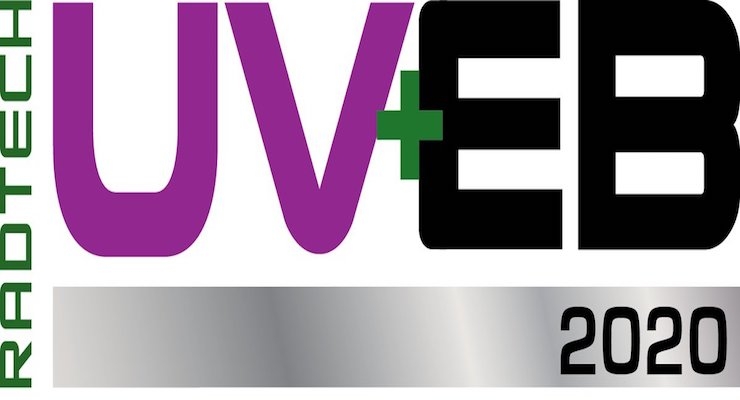RadTech recently launched RadTech 2020 2.0, a series of weekly presentations by speakers from the RadTech 2020 conference – and added two additional RadTech 2020 2.0 courses.
The speakers will give these presentations live and online using the Zoom platform.
Registration is free, but space is limited so make sure to register as soon as possible.
Registration is open now for all courses.
Attainable Sustainable: Using Electron Beam Technology in Compostable Flexible Packaging
Karl Swanson and Sage Schissel, PCT Ebeam and Integration, LLC
Wednesday, Apr 15, 2020, at noon EDT
Registration: https://zoom.us/webinar/register/WN_O1BPJtTKSk-QxSiwpmA-Kg
Sustainable practices, including material reduction and the use of bio-based, recyclable, or compostable materials, are forefront in the minds of both consumers and the packaging industry. This is especially true for flexible packaging, which has traditionally consisted of multi-layer, non-recyclable structures. In this study, the use of ebeam technology in the life cycle of a compostable, flexible package was investigated. This was the Best Paper Award Winner from the RadTech 2020 Technical Conference.
Photoinitiator selection to advance the UV curing industry in an uncertain world
Stephen Postle, IGM Resins
Tuesday, April 21, 2020, at 11:00 a.m. EDT
Registration: https://zoom.us/webinar/register/WN_Nx3IVzb0QpS8t0u8AjBurA
The UV curing industry stands at the brink of a number of compliance and performance challenges. Photoinitiators including acyl phosphine oxides and alpha-amino ketones are under activist regulatory threat. In this presentation, we will present alternates to workhorse photoinitiators like TPO, novel photoinitiator blends offering dual-cure options, acrylated photoinitiators for ultra-low migration, and patented acyl phosphine photoinitiators offering superior performance for sensitive packaging, inkjet, wood coatings and other sectors.
North American Market Overview
Eileen Weber, allnex and President, RadTech North America
Wednesday, April 29, 2020, at 11:00 a.m. EDT
Registration: https://zoom.us/webinar/register/WN_CCFC801ZSvKltL9GrFP5gg
This presentation will serve as an overview of the North American market for UV+EB curable materials, equipment, and end-uses.
Effects of Structure and Composition on Mechanical Properties of UV Systems
Dr. Paul Share, Advanced Materials Design
May 7, 2020, at 02:00 p.m. EDT
Registration: https://zoom.us/webinar/register/WN_-J0VCTnrSiiGuPnHUTIPTw
The formulation of UV curable compositions for 3D printing requires the simultaneous optimization of opposing properties. Increases in cure speed, desirable for manufacturing throughput, can lead to brittleness, curling, and storage instability. Increases in tensile strength and impact resistance, desirable for structural components, can lead to poor flexibility and low elongation. Increases in elongation, desirable for elastomers, can lead to surface tackiness and poor tear resistance. There is also a limited range of acceptable formulation viscosities unique to each 3D printing technology which further confines the optimization space. In this presentation, a systematic synthesis and statistical mixture design study of the effects of oligomer structure and monomer formulation composition on the resulting mechanical properties of UV cured systems will be described.
High-Performance UV Curable Resin for Automotive Coatings
Marcus Hutchins, allnex
May 13, 2020, at 11:00 a.m. EDT
Registration: https://zoom.us/webinar/register/WN_PLjeFlWPQ9ihjcWFvGTtaw
Light weighting, reduced carbon footprint, throughput, and sustainability are just some of the more common buzzards original equipment manufacturers (OEM) are using. They are looking for this advantage in not only the assembly process but every part and coating aspect that goes into that assembly. Going hand and hand with the challenges to improve the assembly process is the need to meet more stringent performance requirements. We have developed a number of innovative UV curable products that can be used in automotive refinish, films, conformal coatings, and glazing applications that maximize throughput and coating performance. This paper will discuss a variety of UV curable resins that can be used in a variety of automotive applications such as film and sheets used in IMD/IML, metallization, conformal coatings, structural adhesives and automotive refinish applications allowing formulators and finishers to capitalize on the intrinsic values of UV curable chemistry such as rapid throughput and excellent chemical and abrasion resistance.













